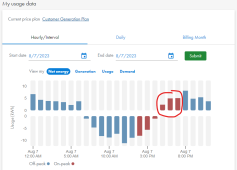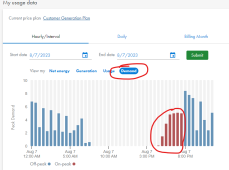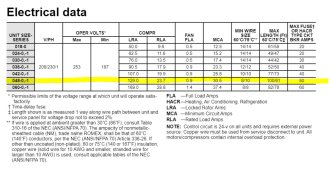Reading this thread, I believe the topic starter is in Phoenix, and the utility company is SRP. The prices and demand-related problems are very familiar with the E27 SRP Solar plan. So, welcome to the club.
Here is my own thread, discussing a very similar problem with a detailed analysis:
Hi. I'm from Phoenix, AZ with 12.96kW grid-tied system up and running. It has 5 strings of panels and two SMA grid-tied inverters working in parallel. They are AC coupled before solar meter. It's a standard design recommended by SRP (utility company) published on their Web-site I'm on "Customer...

diysolarforum.com
Hope it can help.
I have a 16kW Solar on my roof (grid-tied, no batteries), and my 5 Ton A/C is responsible for 2/3 of all my demand fees during peak times. However, my demand is capped at 5.5 kW just by manipulating the A/C compressor with a DIY "Smart Demand" solution, described here:
Would these panels be ok for roof mount?

diysolarforum.com
It was a lot of discussions, suggesting to switch the house loads from the grid to batteries+inverter during peak times in order to completely eliminate demand charges. However, that solution would be very expensive, as I need at least 20 kWh of energy stored in the battery to cover 5-8pm consumption (please see the screenshots below) and a very large (32 kW) battery inverter capable of giving 130 Amps LRA to my A/C unit.
The "Easy Start Soft Starter" device, suggested here, looks very promising if it can bring my LRA below 80 Amps. In such a case a 10 kW inverter (20 kW peak) for ~$400 could meet the needs of the A/C.
So, instead of the entire house, I'm thinking of hooking up just the A/C unit via a relay (transfer switch) allowing it to be switched between the grid (off-peak or on-peak with enough solar power) AND inverter (no solar energy or its production is insufficient).
I believe that could bring my demand level from 5.5 kW down to under 3 kW around the year, which is pretty cheap with the SRP E27 price plan.
The A/C unit running almost 24/7 during July-August takes 5-6 kW/hr. So, in order to offset 3 hours of its usage to "Off-peak" hours, I need a 15 kW battery and a 10 kW (20 kW peak) 240V inverter.
Does this look feasible? Any pros and cons?











